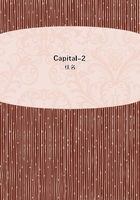
第100章
In Ricardo the uncritical adoption of the Smithian confusion is more disturbing not only than in the later apologists, in whom the confusion of ideas is rather something not disturbing, but than in Adam Smith himself, because Ricardo, in contrast to the latter, is more consistent and incisive in his analysis of value and surplus-value, and indeed upholds the esoteric Adam Smith against the exoteric Adam Smith.
Among the physiocrats there is no such confusion. The distinction between avances annuelles and avances primitives refers only to the different periods of reproduction of the different component of capital, especially of agricultural capital, while their views on the production of surplus-value form a part of their theory that is independent of these distinctions, a part they hold up as the strong point of the theory. The formation of surplus-value is not explained as originating from capital as such, but is attributed to one particular sphere of the production of capital, agriculture.
Secondly. The essential point in the definition of variable capital -- and therefore for the conversion of any sum of values into capital --is that the capitalist exchanges a definite, given (and in this sense constant)magnitude of value for value-creating power, a magnitude of value for the production, self-expansion, of value. Whether the capitalist pays the labourer in money or in means of subsistence does not affect this basic definition.
It only alters the mode of existence of the value advanced by the capitalist which in one case exists in the form of money for which the labourer buys himself his means of subsistence in the market, in the other case in the form of means of subsistence which he consumes directly. Developed capitalist production rests indeed on the assumption that the labourer is paid in money, just as in general it presupposes the process of production brought about by the process of circulation, hence presupposes the monetary system.
But the creation of surplus-value -- and consequently the capitalisation of the advanced sum of values -- has its source neither in the money-form of wages nor in the form of wages paid in kind, nor in the capital laid out in the purchase of labour-power. It arises out of the exchange of value for value-creating power, out of the conversion of a constant into a variable magnitude.
The greater or smaller fixity of the instruments of labour depends on their degree of durability, hence on a physical property. Other circumstances being equal, they will wear out sooner or later, will therefore function a longer or a shorter time as fixed capital, according to their durability.
But it is by no means solely on account of this physical property of durability that they function as fixed capital. The raw material in metal factories is just as durable as the machines used in manufacturing, and more durable than many component parts of these machines, such as leather and wood.
Nevertheless the metal serving as raw materials forms a part of the circulating capital, while the instrument of labour, although probably built of the same metal, is a part of the fixed capital when in use. Consequently it is not because of the material, physical nature, nor the relatively great or small speed with which it wears out that a metal is put now in the category of fixed, now in that of circulating capital. This distinction is rather due to the role played by it in the process of production, being a subject of labour in one case and an instrument of labour in the other.
The function of an instrument of labour in the process of production requires that on the average it should serve for a longer or shorter period in ever renewed labour-processes. Its very function therefore prescribes that the stuff of which it is composed should be more or less durable.
But it is not the durability of the material of which it is fabricated that by itself makes it fixed capital. The same stuff, when raw material, becomes circulating capital, and among economists who confuse the distinction between commodity-capital and productive capital with the distinction between circulating and fixed capital, the same stuff, the same machine, is circulating capital as product and fixed capital as instrument of labour.
Although it is not the durability of the material of which it is fabricated that makes an instrument of labour fixed capital, nevertheless its role as such an instrument requires that it should be composed of relatively durable material. The durability of its material is therefore a condition of its function as an instrument of labour, and consequently the material basis of the mode of circulation which renders it fixed capital. Other things being equal, the higher or lower degree of wear and tear of the stuff it is made of impresses upon it in a higher or lower degree the stamp of fixedness, is therefore very closely interwoven with the quality of being fixed capital.
If the part of capital laid out in labour-power is considered exclusively from the point of view of circulating capital, hence in contrast with fixed capital, and if consequently the distinctions between constant and variable capital are lumped with those between fixed and circulating capital, then it is natural -- supposing that material reality of the instrument of labour forms an essential basis of its character of fixed capital --to derive its character of circulating capital, in contrast with the fixed capital, from the material reality of the capital invested in labour-power, and then again to determine the circulating capital with the aid of the material reality of the variable capital.